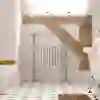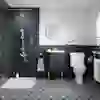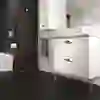Share:
If you’ve had your bathroom radiator for some time, chances are you may at some point need to consider flushing it. Through time and use, our bathroom radiators can accumulate a great deal of gunk. This means they’re unable to perform at their most efficient and aren't as effective at heating the bathroom comfortably.
However, flushing your bathroom radiator can often be done as a DIY task. Here, The Bathroom Showroom offers a quick, helpful guide for flushing out your bathroom radiator. This will help you return your radiator to full working capacity so you can enjoy a more comfortable space once again.

How Does Radiator Flushing Work?
Flushing a radiator is simply a way to remove all the sludge that has accumulated at the bottom of this fitting. Radiator sludge is a combination of dirt, rust, and scale that has built up over time. As our bathroom radiators are put through their paces, it’s inevitable that this situation naturally occurs. However, if it’s not resolved it can rapidly age your radiator while putting it at risk of breaking down when you need it the most.
What Are the Tell-Tale Signs Your Bathroom Radiator Needs Flushing?
You may be able to tell your bathroom radiator requires flushing if you spot any of the following signs:
- Noticeable cold patches at the bottom of your radiator when it's on (when radiators remain cold at the top it’s usually a sign they need bleeding)
- When bleeding your radiators you notice a brown liquid escaping
- You find yourself having to repeatedly bleed your radiators
- Your boiler heat pump is leaking or your boiler keeps making loud noises
How Often Should I Flush My Bathroom Radiator?
Most people wait for the tell-tale signs that their bathroom radiator needs flushing before acting upon it. However, for best practice and to ensure ongoing energy efficiency, it’s good to consider tackling this job every few years.
Though it's not necessary for new radiators, if you’ve had your bathroom radiator for several years, flushing may well help extend its lifespan and prevent any potential issues occurring in the future.
What Tools Do You Need to Flush a Bathroom Radiator?
- A large cover for the floor area
- A large bucket to flush the dirty water and sludge into
- A spanner
- A hose pipe

How To Flush A Bathroom Radiator
- Turn your heating off and make sure your bathroom radiator is cool to the touch before starting this job. You can turn off your bathroom radiator via the radiator's valve. Turn it clockwise all the way until you find it can't be turned anymore.
- Cover the area around your radiator with a large cloth to protect your bathroom floor.
- Taking your spanner, loosen the nut that joins the thermostatic radiator valve to your radiator.
- Place your bucket underneath the thermostatic valve and, using your radiator key, open the bleed valve. This will instantly release any air pressure from the radiator.
- Proceed to drain your bathroom radiator, catching any sludge and dirty water that is released from the valve.
- Then move your bucket and place it under the lock shield valve. Using your spanner to loosen the nut on this valve, continue to catch any water from this side of the radiator too.
- When you've finished draining your radiator, take your radiator key and close the bleed valve.
- To continue to flush your bathroom radiator, it's highly recommended to take it outside. As you do this with care, it’s also worth keeping the radiator covered as you may find it still has dirty water and sludge inside it.

- With your bathroom radiator positioned safely outside, you can then attach the hose pipe to the radiator valve inlet.
- Turn on the water full blast and allow it to run through the radiator to give it a good flush out. You should notice as the water comes out at the other end, so should all the built-up sludge.
- To fully ensure you’ve dislodged all the sludge, repeat this process at the other side of the radiator as you attach the hose to the other value inlet and continue to flush water through. Do this until the water runs clear.
- Hang your radiator back on the bathroom wall and reconnect it. This means ensuring you've tightened the nuts and opened both valves.
- Once again, using your radiator key, let any trapped air escape from the air vent by opening the bleed valve.
- Before you switch your heating back on, be sure to check your boiler pressure. This may well have dropped when you disconnected your radiator.
- Finally, switch your heating back on and check that your bathroom radiator is working properly. The radiator valve can now be turned anticlockwise for the heat to be restored to the radiator.
Flushing a Radiator Can Be Performed as a DIY Task or by a Professional
If you’re not entirely confident with this task, you can hire a professional plumber to flush your bathroom radiator. Alongside specialist equipment, many plumbers will use a powerful chemical flush to confidently ensure all sludge in the radiator is eliminated. They will also be able to flush several of your home's radiators during the same job, thus ensuring your entire heating system runs at peak performance in the long run.
If you’re considering adding a new radiator, book an appointment with The Bathroom Showroom. Experts in all things bathrooms, we can help turn your dream bathroom into a reality